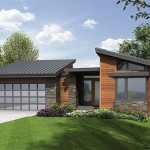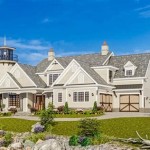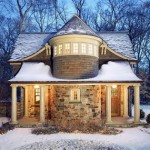Large house floor plans encompass the architectural blueprints for expansive residential properties, typically exceeding 4,000 square feet. These floor plans meticulously delineate the layout and design of multiple bedrooms, bathrooms, living areas, and amenities, catering to families seeking ample space and luxurious living.
For instance, a sprawling ranch-style house floor plan may feature an open-concept living area, a chef’s kitchen with a butler’s pantry, a dedicated home office, a grand master suite with a private balcony, and numerous guest bedrooms. Such plans prioritize functionality, flow, and natural light, creating a harmonious and comfortable living environment.
In the subsequent sections of this article, we will delve into the intricacies of large house floor plans, exploring their advantages, design principles, and popular architectural styles. Whether you are an aspiring homeowner, an interior designer, or simply curious about the world of spacious living, this exploration will provide valuable insights and inspiration.
When designing large house floor plans, meticulous attention should be paid to the following key considerations:
- Flow and Circulation
- Natural Light
- Room Proportion
- Storage and Organization
- Energy Efficiency
- Architectural Style
- Outdoor Spaces
- Future Expansion
Adhering to these principles ensures that large house floor plans not only provide ample space but also create comfortable, functional, and aesthetically pleasing living environments.
Flow and Circulation
Flow and circulation refer to the seamless movement of people and objects throughout a house. In large house floor plans, it is crucial to ensure that the layout promotes easy and efficient movement, avoiding bottlenecks and awkward transitions.
- Create a Central Hub: Establish a central area, such as a grand foyer or open-plan living space, that connects the different wings or sections of the house. This central hub facilitates effortless movement and provides a sense of orientation.
- Define Clear Pathways: Delimit clear pathways and corridors that connect the various rooms and spaces. Avoid narrow hallways or winding staircases that impede flow. Ensure that the width of hallways and doorways is proportionate to the size of the house and the number of occupants.
- Minimize Obstructions: Keep hallways and walkways free of unnecessary furniture or dcor that could create obstacles. Utilize built-in storage solutions to maintain a clutter-free environment that allows for smooth movement.
- Consider Traffic Patterns: Analyze how people will naturally move through the house during daily routines. Design the floor plan to accommodate these patterns, avoiding cross-traffic or conflicting movements that could lead to congestion.
Optimizing flow and circulation in large house floor plans enhances the overall functionality and comfort of the living space, making it a pleasure to navigate and inhabit.
Natural Light
Natural light plays a pivotal role in the design of large house floor plans, as it not only illuminates the interior spaces but also contributes to the overall ambiance and well-being of the occupants.
Maximize Window Size and Placement: Incorporate large windows and strategically place them to capture ample natural light throughout the day. Consider the orientation of the house and the surrounding landscape to determine the optimal placement of windows for maximum sunlight exposure.
Utilize Skylights and Clerestory Windows: Skylights and clerestory windows are effective ways to introduce natural light into interior spaces that may not have access to exterior walls. These architectural features allow light to penetrate deep into the house, creating a brighter and more open atmosphere.
Employ Light-Reflective Materials: Utilize light-colored paint, flooring, and furnishings to reflect and amplify natural light. Glossy surfaces, mirrors, and metallic accents can further enhance the reflective properties, making the space feel more airy and spacious.
Consider Shading and Privacy: While natural light is desirable, it is equally important to control its intensity and maintain privacy. Install window treatments such as blinds, curtains, or shutters to regulate the amount of light entering the house. Use landscaping elements like trees or shrubs to provide privacy while still allowing natural light to filter through.
By incorporating these strategies, large house floor plans can harness the power of natural light to create bright, inviting, and healthy living spaces.
Room Proportion
Room proportion refers to the harmonious relationship between the dimensions of a room, including its length, width, and height. In large house floor plans, maintaining appropriate room proportions is essential for creating comfortable, visually appealing, and functional spaces.
Balance Length and Width: Strive for a balanced relationship between the length and width of a room. Avoid excessively long or narrow rooms, as they can feel disproportionate and uncomfortable. Aim for a ratio of approximately 3:2 or 4:3 for most rooms.
Consider Ceiling Height: Ceiling height significantly impacts the perceived spaciousness and grandeur of a room. In large house floor plans, higher ceilings can create a sense of openness and luxury. However, excessively high ceilings can make a room feel cold and impersonal. Determine the appropriate ceiling height based on the room’s size and function.
Relate Room Size to Function: The size of a room should be proportionate to its intended function. For instance, a grand living room designed for entertaining guests may require more square footage than a cozy den or library. Consider the number of people who will typically occupy the space and the activities that will take place there.
Maintain Visual Harmony: Ensure that the proportions of adjacent rooms are visually harmonious. Avoid abrupt transitions between rooms of vastly different sizes or shapes. Create a sense of flow and continuity by maintaining a consistent scale and proportion throughout the house.
By carefully considering room proportion, designers can create large house floor plans that are not only visually appealing but also comfortable, functional, and inviting.
Storage and Organization
In large house floor plans, ample storage and organization solutions are crucial for maintaining a clutter-free and functional living environment. Thoughtful planning and incorporation of various storage options can streamline daily routines, maximize space utilization, and enhance the overall comfort and efficiency of the home.
Built-In Storage: Utilize built-in storage solutions, such as cabinetry, shelves, and drawers, to maximize vertical space and create dedicated storage areas for various items. This includes customized closets, pantries, and media centers that seamlessly blend with the architectural design.
Walk-In Closets and Pantries: Incorporate walk-in closets and pantries that provide ample space for clothing, accessories, and household items. Design these spaces with adjustable shelving, drawers, and organizers to accommodate different storage needs and maintain a tidy appearance.
Multi-Purpose Rooms: Dedicate specific rooms for storage purposes, such as mudrooms, laundry rooms, and storage closets. These rooms can be equipped with specialized storage systems, such as lockers, hampers, and shelves, to keep items organized and easily accessible.
Hidden Storage: Utilize hidden storage solutions, such as under-bed drawers, pull-out shelves, and ottomans with built-in storage compartments, to maximize space utilization without compromising aesthetics. These hidden storage areas can accommodate seasonal items, bulky belongings, or infrequently used items.
By incorporating these storage and organization strategies, large house floor plans can provide ample space for belongings, maintain a clutter-free environment, and enhance the overall functionality and comfort of the home.
Energy Efficiency
In the design of large house floor plans, energy efficiency plays a crucial role in reducing environmental impact, minimizing energy consumption, and creating sustainable living spaces. By incorporating energy-efficient features and strategies, homeowners can enjoyand cost-effective living while contributing to a greener future.
- Insulation: Proper insulation in walls, ceilings, and floors is paramount for maintaining a comfortable indoor temperature, reducing heat loss in winter and heat gain in summer. Utilize high-quality insulation materials with a high R-value to minimize heat transfer and improve energy efficiency.
- Energy-Efficient Windows and Doors: Install energy-efficient windows and doors that feature double or triple glazing, low-emissivity coatings, and tight seals to reduce heat loss and air infiltration. These measures help maintain a consistent indoor temperature, reducing the reliance on heating and cooling systems.
- Efficient Lighting: Implement energy-efficient lighting solutions, such as LED and CFL bulbs, which consume significantly less energy than traditional incandescent bulbs while providing comparable or better illumination. Additionally, incorporate natural light through strategically placed windows to minimize the need for artificial lighting during daytime hours.
- Smart Home Technology: Integrate smart home technology to optimize energy consumption. Utilize programmable thermostats, motion sensors, and smart plugs to automate temperature control, lighting, and appliance usage, reducing energy waste and promoting sustainable living practices.
By adopting these energy-efficient measures, large house floor plans can not only provide comfortable and luxurious living spaces but also contribute to a more sustainable and environmentally conscious lifestyle.
Architectural Style
The architectural style of a large house floor plan significantly influences its overall aesthetic appeal, character, and functionality. From stately mansions to sprawling ranch-style homes, the choice of architectural style sets the tone and determines the design elements, materials, and structural features of the house.
Traditional Styles: Traditional architectural styles, such as Georgian, Victorian, and Colonial, are characterized by their symmetrical facades, ornate details, and a timeless elegance. These styles often feature grand entryways, columns, and intricate moldings, exuding a sense of grandeur and sophistication.
Modern Styles: Modern architectural styles, such as Contemporary, Mid-Century Modern, and Bauhaus, emphasize clean lines, open floor plans, and an integration of indoor and outdoor spaces. These styles prioritize functionality, natural light, and the use of innovative materials, such as glass, steel, and concrete.
Rustic Styles: Rustic architectural styles, such as Craftsman, Lodge, and Farmhouse, draw inspiration from natural materials and organic forms. These styles often incorporate stone, wood, and exposed beams, creating a warm and inviting atmosphere that blends seamlessly with natural surroundings.
Eclectic Styles: Eclectic architectural styles combine elements from various design periods and cultures, resulting in unique and visually striking homes. These styles allow for a mix of architectural features, materials, and color palettes, creating a personalized and eclectic living space that reflects the homeowner’s individual taste and style.
Outdoor Spaces
In the design of large house floor plans, outdoor spaces play a crucial role in extending the living space beyond the interior walls, providing opportunities for recreation, relaxation, and connection with nature. Thoughtful planning and incorporation of outdoor amenities can transform a house into a true haven, offering a seamless transition between indoor and outdoor living.
- Patios and Decks: Patios and decks provide an immediate extension of the living space outdoors, offering a comfortable and inviting area for dining, entertaining, or simply enjoying the fresh air. These outdoor spaces can be customized with various materials, such as wood, stone, or composite decking, and can be covered or uncovered to suit specific needs and preferences.
- Swimming Pools and Spas: Swimming pools and spas are luxurious additions to large house floor plans, providing a refreshing retreat during hot summer months or a relaxing sanctuary for unwinding after a long day. Pools can be designed in various shapes and sizes, and spas offer therapeutic benefits for relaxation and rejuvenation.
- Outdoor Kitchens and Fireplaces: Outdoor kitchens and fireplaces extend the functionality of the home outdoors, allowing for al fresco cooking and dining experiences. These amenities create a social hub where homeowners can entertain guests or simply enjoy a meal surrounded by nature. Fireplaces provide warmth and ambiance on cooler evenings, extending the use of outdoor spaces well into the fall and winter months.
- Landscaping and Gardens: Landscaping and gardens transform the outdoor surroundings of a large house, creating a visually appealing and serene environment. Lush lawns, colorful flower beds, and mature trees provide a picturesque backdrop for outdoor activities and enhance the overall aesthetic appeal of the property.
By incorporating these outdoor spaces into large house floor plans, homeowners can create a truly immersive living experience that seamlessly blends indoor and outdoor living, offering a sanctuary for relaxation, recreation, and connection with nature.
Future Expansion
When designing large house floor plans, it is prudent to consider the potential for future expansion. Whether to accommodate a growing family, changing lifestyle needs, or the addition of amenities, incorporating flexibility into the design allows homeowners to adapt their living space to evolving circumstances without the need for major renovations.
- Modular Design: Modular design involves dividing the floor plan into smaller, self-contained units or modules that can be added or removed as needed. This approach provides flexibility and scalability, allowing homeowners to expand the house incrementally while maintaining a cohesive architectural style.
- Unfinished Spaces: Incorporating unfinished spaces, such as an attic, basement, or bonus room, into the floor plan provides the potential for future expansion without the immediate need for costly finishing. These spaces can be transformed into additional bedrooms, living areas, or home offices as the need arises.
- Adaptable Room Layouts: Designing rooms with adaptable layouts allows for easy reconfiguration to accommodate changing needs. For instance, a large bonus room can be subdivided into smaller bedrooms or a playroom, while a formal dining room can be converted into a home office or library.
- Structural Reinforcement: To support future expansion, consider incorporating structural reinforcement into the design. This may involve adding additional load-bearing walls, strengthening the foundation, or installing reinforced beams to accommodate potential additions or modifications.
By planning for future expansion in the design of large house floor plans, homeowners can create adaptable and flexible living spaces that can evolve alongside their needs, ensuring a comfortable and functional home for years to come.










Related Posts








